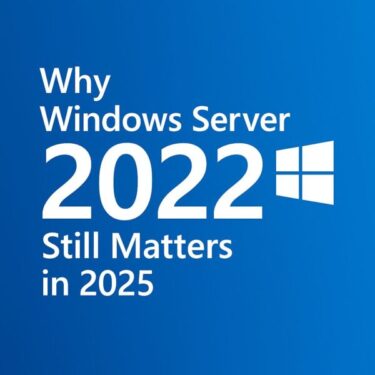![How to Replace Your PC’s SSD by Yourself [2025 Guide] 1 Illustration of a person installing a 2.5-inch SATA SSD into a laptop, with tools and screws on the desk, representing a DIY SSD replacement scene.](https://kimiyoya.com/wp-content/uploads/2025/03/1F1DB572-A366-4D42-9563-B53FD67205FC.jpg)
Thinking about replacing your SSD but afraid you might break your computer?
Don’t worry. Replacing a laptop or desktop SSD is actually something many beginners can do by themselves. In 2025, tools, free software, and affordable SSDs are easier than ever to get—so you can upgrade your PC without hiring a technician.
What Is SSD Replacement? Benefits of Doing It Yourself
SSD replacement (or SSD upgrade) means removing your current drive—such as an old HDD or a smaller SSD—and installing a new one. Here are the main benefits:
- Faster boot and app launch times
- More storage space (for example, upgrade from 256GB to 1TB)
- Extend your computer’s life by replacing aging or failing drives
In the past, this was something only professionals typically handled. But now, with clear guides and accessible tools, more and more people are doing it themselves—and saving money in the process.
What You’ll Need (Tools, Software, and Precautions)
- A new SSD (SATA or NVMe)
- External SSD enclosure or USB-to-SATA adapter for cloning
- Free cloning software (for example, Macrium Reflect, EaseUS Todo Backup)
- Precision screwdriver set
- USB stick or external drive for backing up important files
Before you buy, check your laptop or desktop specifications to confirm which SSD type (2.5-inch SATA, M.2 SATA, or NVMe) is compatible with your machine.
Install the Cloning Software
Before you physically swap drives, you’ll usually want to clone your existing system to the new SSD. To do that, download and install a cloning tool. Here are two recommended free options:
- Macrium Reflect Free – Reliable, widely used, and offers a simple interface (English only).
▶ Official site here - EaseUS Todo Backup Free – Available in both Japanese and English. Beginner-friendly with a guided cloning wizard.
▶ Official site here
Download the software, install it, and keep it ready. Once it’s set up, you’re prepared to start the cloning process.
What Is Cloning Software?
Cloning Software Explained (For Beginners)
Cloning software allows you to copy everything from your current hard drive—including Windows, apps, and settings—to your new SSD.
This means you can boot from the new drive without reinstalling Windows or your programs from scratch.
After cloning, your PC should work exactly the same as before—just faster and with more space.
Step-by-Step: Replace Your SSD (Clone → Swap → Boot)
- Insert the new SSD into the external enclosure (or connect via USB adapter) and plug it into your PC.
- Launch the cloning software and select your current system drive as the source.
- Set the new SSD as the destination drive and start the clone process.
- Wait until cloning is fully completed, then shut down your PC and disconnect the power.
- Open your laptop or desktop carefully, remove the old SSD or HDD, and install the new SSD in its place.
- Boot up the PC and confirm that Windows starts normally and your files are intact.
💡 If the PC doesn’t boot from the new SSD, enter the BIOS/UEFI setup (usually by pressing F2, Del, or F12 at startup) and manually set the new SSD as the first boot device.
Tips to Avoid Mistakes (Even for First-Timers)
- Discharge static electricity by touching a metal surface before opening your PC case or laptop.
- Back up your important data to an external drive before cloning, just in case something goes wrong.
- Choose a quiet time (like a weekend or evening) so you don’t feel rushed during the upgrade.
- Keep screws in a small tray or container so they don’t get lost.
Free vs Paid Cloning Software – What’s the Difference?
For most home users, free tools are more than enough. However, paid versions can offer useful extras:
- Free: Macrium Reflect Free, EaseUS Todo Backup Free – suitable for basic system cloning and drive migration.
- Paid: Additional features like scheduled backups, incremental backups, automatic partition resizing, and advanced restore options.
We recommend starting with a free tool. Macrium Reflect is especially popular among both beginners and experienced users because of its stability and clear interface.
How to Choose the Right SSD and Tools
- SSD: Brands like Crucial, Western Digital (WD), and SanDisk are solid choices for 2.5-inch SATA SSDs. For NVMe, look for models with good reviews and built-in heatsinks if your system tends to run hot.
- Enclosure: Choose an external enclosure with USB 3.0 or higher and UASP support for faster cloning speeds.
- Screwdrivers: Use a precision screwdriver set with magnetized tips to make handling tiny screws easier.
🔧 Some laptops require special Torx (star-shaped) drivers or very small Phillips sizes. Check your model in advance so you’re not stuck mid-upgrade.
👉 View recommended SSD on Amazon
* Some of the links in this article are affiliate links. We may earn a small commission if you make a purchase—at no extra cost to you.
After the Replacement: Final Checklist
- Windows boots normally and remains activated.
- File Explorer shows the new SSD as your main C: drive.
- Your apps and files are accessible just like before the upgrade.
- Old recovery partitions or duplicate system partitions are not confusing Windows (you can manage partitions later if needed).
💡 If boot speed feels slower than expected, check for Windows Updates, install the latest SSD firmware (if available), and make sure your power plan is set to Balanced or High performance.
Recommended SSDs and Accessories
If you’re not sure which SSD or accessories to buy, here are some trusted options that work well with many laptops and desktops. They offer a good balance between performance, reliability, and price.
Choosing the right gear can make your upgrade smoother and help avoid problems like connection errors, overheating, or slow transfer speeds. Below are some recommended SSDs, external enclosures, and screwdriver kits you can buy online:
This article contains affiliate links. If you purchase through them, we may earn a small commission at no additional cost to you. Thank you for your support!
Also consider adding a USB enclosure or SATA cable if you don’t already have one—these will be essential for cloning and future backups.
Summary: It’s Easier Than You Think
At first, upgrading your SSD by yourself may sound intimidating. But with the right tools and a clear step-by-step guide, it’s surprisingly achievable even for beginners. You’ll boost speed, increase storage, and extend your PC’s life—all without paying for repair services.
We hope this article gives you the confidence to try it yourself. Work slowly, double-check each step, and enjoy your faster, refreshed PC once the upgrade is complete!
This article includes affiliate links. If you purchase through these links, we may earn a small commission at no extra cost to you. Thanks again for your support!
✔️You might also find these helpful:
▶︎ How to Share Files Between Windows PC and Smartphone
▶︎ Fixing Broken Wallpapers and Custom UI After Windows 11 24H2 Update: Causes and Solutions
▶︎ What to Do When Windows Gets Stuck at “Installing Application”


